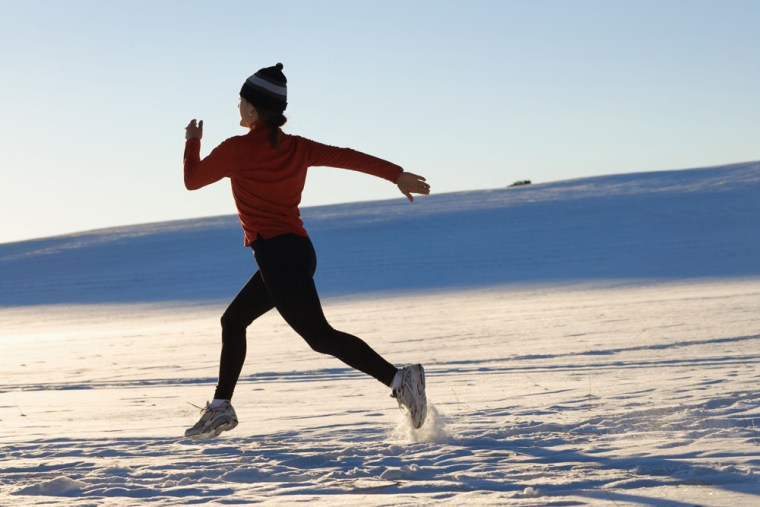Sniffles, runny noses and flu-like symptoms can deter, delay and even derail many exercisers just when enthusiasm for that New Year's resolution is beginning to flag.
Health and fitness experts advise to starve a fever of exercise. But feeding a cold moderately, with a brisk walk, may not be a bad idea.
"The classic line from every sports medicine doctor is, ‘If you can do it, do it. If you can't, don't,'" said Dr. Lewis G. Maharam, author of "Running Doc's Guide to Healthy Running."
Usually if symptoms are confined to above the neck, exercising is OK, he explained. But if you're running a fever of 101 degrees Fahrenheit (38.3 degrees Celsius) or higher, skip it.
Body heat rises during exercise due to increased metabolism, explained Maharam, who practices medicine in New York City. If you start high, your body's way of cooling you down is out of balance.
"If fever gets too high, you break down proteins, maybe in the kidneys or liver," he said.
The U.S. Centers for Disease Control and Prevention estimates that more than 425 million case of colds and flu occur annually in the United States. The average person has about three respiratory infections per year.
Dr. David C. Nieman, a professor of health sciences at Appalachian State University, North Carolina Research Campus, said research shows that regular, moderate aerobic exercise strengthens the immune system, and that people who exercise report fewer colds than their inactive peers.
Nieman said five days or more of aerobic activity per week was found to be a powerful factor in lowering the number of sick days.
"Even three to four days was effective. To be avoided was being sedentary," he explained.
But when animals infected with a systemic virus are forced to exercise in fever and pain, studies show that their symptoms are exacerbated, prolonged, and sometimes life-threatening.
'Bed rest'
"It's very dangerous." said Nieman, who has written about the impact of exercise on the common cold. "If you have flu or virus with fever and pain, the best remedy is bed rest. The worst thing is to sweat it out with exercise."
He said common cold and flu viruses can stay on objects, such as door handles, treadmills and computer keyboards, for hours. The main route to infection is through touching one's mouth or nose with unwashed hands.
Patrick Strait, of Snap Fitness, a franchiser of gyms with locations worldwide, said this time of year fitness centers step up cleaning efforts because they see a lot more traffic and so many people catch colds and the flu.
"It's a public place where a lot of people are sweating," said Strait. "We tell manager/owners to clean once an hour, wash down the equipment with bleach, etc."
He urged clients to wipe down equipment and wash hands often.
"And if you're sick, don't come to the gym," he said.
Jessica Matthews, an exercise physiologist with the American Council on Exercise, said some days symptoms dictate scaling back your workout or, if you're contagious, skipping the gym entirely.
"Always listen to your body," she said. "It might be a good idea to exercise at home or privately."
Nieman said that while moderate exercise strengthens the immune system, elite athletes will experience a rise in stress hormones and a dip in immunity after about 90 minutes of high-intensity activity.
Maharam said the immunity of marathoners is decreased for up to 72 hours after a race. During that time, the athletes are more susceptible to colds, flu, and, most commonly, the so-called "marathon sniffles."
He said symptoms usually subside within 48 hours.
"At the end of a race, when you're all sweaty and they're all sweaty, you don't need to be hugging and kissing people," Maharam said. "Your immune system isn't as strong as it was."
Related:
5 things to do when you have the flu
